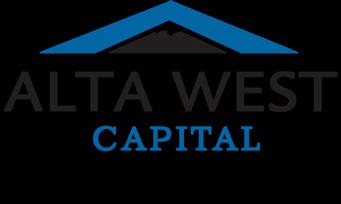MORTGAGE REFORM
Unlocking new opportunities p.44

FUTURE GOALS
Creating an interconnected ecosystem p.8 +
PINS AND PLEDGES
Brokers raise funds for cancer research p.30
p.10
to











Unlocking new opportunities p.44

FUTURE GOALS
Creating an interconnected ecosystem p.8 +
PINS AND PLEDGES
Brokers raise funds for cancer research p.30
p.10
to










cus tom mor tgage solutions your client s require.
cus tom mor tgage solutions your client s require
We
We provide a broad range of residential 1s t and 2nd mor tgages tailored to the needs of your self- employed, stated income, and low beacon
client s . Fur thermore, a common sense lending approach allows us to approve and fund deals fas t.
• Re sidential Mor tgages
• LT V Sliding Scale of 6 0% on the balance
• O PEN Terms Standard
client s Fur thermore, a common sense lending approach allows us to approve and fund deals fas t. • Re sidential Mor tgages • LT V Sliding Scale of 6 0% on the balance • O PEN Terms Standard • B C , Alber ta and Ontario
• B C , Alber ta and Ontario
applicati o ns @ a n t r imi n v e st m ents c o m
P r i v a t e L e n d e r – F ilogix, Vel o ci t y a n d L
P r i v a t e L e n d e r – F ilogix, Vel o ci t y a n d L e n des k






GETTING TO KNOW CMBA NATIONAL BOARD MEMBERS
Reinforcing multi-level support systems BY SAMANTHA ASHENHURST
DELIVERING VALUE FOR MEMBERSHIP
CMBA National’s provincial association presidents recap the activities and accomplishments of 2024 and look ahead to a new year of targeted programming BY LISA GORDON
TAX UPDATE: PROPOSED INCREASE TO CAPITAL GAINS INCLUSION RATE DEFERRED TO 2026 BY THE BLAKES TAX GROUP
PINS AND PLEDGES
Strike Out Cancer unites mortgage brokers and raises research funds, coast to coast BY SAMANTHA ASHENHURST
BY ROBERT MCLISTER
TIME IS OF THE ESSENCE
Can a purchaser rescind a Contract of Purchase and Sale if the contract is not properly assigned by either party before the completion date?
BY MCQUARRIE: DISPUTE RESOLUTION AND LITIGATION GROUP
ALBERTA MORTGAGE
REGISTRATION LEVIES INCREASE AGAIN: LAND VALUE NOW VALUELESS
BY ALINA KAISER, KATHERINE RUBIN AND SCOTT SANGSTER
UNLOCKING NEW OPPORTUNITIES
Mortgage Reforms to Support Homeownership and Secondary Suites BY LAURA KERSHAW





VOLUME 10 ISSUE 1 WINTER 2025
THE CANADIAN MORTGAGE BROKERS ASSOCIATION
EXECUTIVE DIRECTOR Carla Giles
CMBA - ATLANTIC
Mortgage Brokers Association of Atlantic Canada 12 M - 7095 Chebucto Road, Halifax, NS B3L 0A1
CMBA - BC
Mortgage Brokers Association of British Columbia 900-2025 Willingdon Avenue, Burnaby, BC V5C 0J3
CMBA - ONTARIO
Independent Mortgage Brokers Association of Ontario 7 - 40 Winges Road, Woodbridge, ON L4L 6B2
CMBA - QUEBEC L'Association des courtiers hypothecaires du Québec 5855 Taschereau #202, Brossard, QC J4Z 1A5
CANADIAN MORTGAGE BROKER
magazine is produced by the Canadian Mortgage Brokers Association (CMBA National)
EDITOR
Carla Giles
STAFF WRITER
Samantha Ashenhurst
MANAGING
EDITOR
Kathleen Freimond
ART DIRECTOR
Scott Laing
BILLING AND SALES
Debra Hiller
CONTRIBUTORS
Blake, Cassels & Graydon LLP
Lisa Gordon
Alina Kaiser
Laura Kershaw
Robert McLister
McQuarrie
Katherine Rubin
Scott Sangster
IMAGES Adobe iStock
CANADIAN MORTGAGE BROKER © All rights reserved.
The views expressed in CANADIAN MORTGAGE BROKER are those of the respective contributors and are not necessarily those of the publisher or staff.
PUBLICATIONS MAIL AGREEMENT 41297283
Please return undeliverable Canadian addresses to 900-2025 Willingdon Ave., Burnaby, BC V5C 0J3


BY CARLA GILES, MBA, CAE, CEO OF CMBA-BC, MBIBC, EXECUTIVE DIRECTOR, CMBA NATIONAL
The future of Canada’s mortgage industry depends on its ability to adapt to emerging technologies
The Canadian housing market is navigating a range of challenges, from global trade uncertainties to shifting market dynamics and increasing regulatory demands. Amid these pressures, technology is playing an increasingly critical role in transforming how mortgage professionals operate. As the industry continues to evolve, greater collaboration between stakeholders in the real estate ecosystem is becoming essential. A more integrated ecosystem not only enhances operational efficiency but also strengthens consumer trust.
Embracing a seamless, secure and efficient approach to data management presents an opportunity to drive industry growth, enhance consumer protection and prepare for regulatory changes. Advances in technology and data integration are shaping this transformation, while federal privacy law reforms are set to introduce new considerations for mortgage professionals in managing client information.

The mortgage and real estate industries remain fragmented, with each player – whether realtors, mortgage brokers, lenders, appraisers or legal professionals –operating on separate platforms lacking standardized data formats and protocols. This fragmentation leads to redundancies, inefficiencies, and increased risks of errors or fraud, creating delays and inconsistencies in service for both professionals and consumers.
To improve operational efficiency, the industry needs to adopt better data interoperability. When data flows seamlessly and securely between stakeholders, it not only enhances decision-making but also mitigates risks, reduces fraud and simplifies transactions.
In British Columbia, a group of stakeholders across the real estate ecosystem has recently come together to address this challenge. We are having conversations about the need for real property data standards, understanding that consistent standards will lead to more efficient
workflows, greater transparency and improved data traceability across the sector. Ensuring that modernized data practices are underpinned by robust privacy safeguards and security measures is a critical step toward achieving new levels of collaboration, trust and innovation within the real estate sector.
Recognizing the importance of data standards in the mortgage industry, the Canada Mortgage and Housing Corporation (CMHC) has been researching mortgage industry data standards (MIDS) to support the development of a standardized framework for data sharing. The research was conducted in three phases, starting with the release of the first report in October 2020. This report assessed the costs and benefits of implementing a MIDS framework. In April 2021, the second report outlined key governance elements required for successful implementation. The final report, published in 2023, consolidated the findings and provided initial materials, including a data dictionary and educational resources, to support industry-wide adoption. While no formal adoption of MIDS is currently planned, the research provides a clear roadmap for moving forward. It outlines the necessary steps to implement the framework, including the establishment of governance structures, further refinement based on industry feedback, and the identification of pilot projects to test the framework in action.
adopting robust cybersecurity measures, such as encrypted platforms, two-factor authentication and secure cloud storage, all while ensuring compliance with Canada’s privacy regulations.
At the same time, federal and provincial privacy law reforms are expected to introduce significant changes to how industries manage data. The proposed Artificial Intelligence and Data Act, while delayed, will introduce new standards governing AI usage, data privacy and bias mitigation. These reforms will have a direct impact on how mortgage professionals manage client data, and it is critical that brokers and lenders stay informed and prepare for these changes. Being proactive in understanding and adapting to these potential reforms will ensure compliance and reinforce consumer protection.
As privacy laws evolve, mortgage professionals must remain proactive in educating clients on data protection and working alongside regulators to stay ahead of emerging threats.
The future of Canada’s mortgage industry depends on its ability to adapt responsibly to emerging technologies while maintaining consumer trust. By embracing data interoperability, prioritizing data security and preparing for new privacy regulations, we can create a more efficient, transparent and secure ecosystem.
As we move forward, it is essential that technology serves to enhance, not replace, the human connections that are at the heart of mortgage brokering. Through collaboration, security and a focus on

While technology offers significant advantages, it also introduces new risks related to cybersecurity, data breaches and fraud. Mortgage professionals are encouraged to prioritize
BY SAMANTHA ASHENHURST
The coming year is sure to be a busy one for Canada’s mortgage industry. Indeed, with a wave of renewals on the horizon, more and more clients will be trusting mortgage brokers to help navigate these uncertain waters.

For Deb White, president of the Canadian Mortgage Brokers Association (CMBA National), this increased demand has been brewing for quite some time.
“I’ve been a mortgage broker for 26 years,” she said. “When I started, only about 10 per cent of Canadian consumers were using mortgage brokers, and right now we’re at 48 per cent. Of course, if you look at Australia and the U.K., both are well over 70 per cent, so we still have some room to go, but we’re definitely moving in the right direction.”
After being appointed in an interim capacity in July 2024, White, who previously served as president of CMBA-BC, officially took the reins as president of CMBA National in November. The organization serves as a unified force for Canada’s provincial mortgage associations, helping these groups support their members with personalized services, while also advocating for broader industry initiatives at the national level.
“Our goal for the coming year is to define our vision and support our provincial groups,” said White. “We want to help the associations in B.C., Ontario, Quebec and Atlantic Canada communicate with their consumers and make sure those who need mortgages understand all of the ways mortgage brokers can help.”
With more than 300,000 mortgages coming up for renewal this year, 2025 will certainly be a significant era for the Canadian mortgage industry.
“At the national level, we’re really focusing on helping our members help their members, who will, in turn, help the consumers,” said White. “To do this, first and foremost, we want to make sure clients know they can trust us and that we’re here for them.”
As many clients face high renewal rates in 2025, promoting the MB symbol as a trusted logo and reinforcing the invaluable role of the mortgage broker are key to this goal.
“It’s really important that we get that information out there to the clients so they understand mortgage brokers are here to help them through the process,” said White.
When asked to share some words of wisdom for the next generation of mortgage brokers, White emphasized the value of learning from experience.
“If you’re just starting to learn the business, don’t go to a company because that’s where your friends are,” she said. “Instead, go somewhere that’s going to best serve your needs.”
“Also, find a mentor who can help you learn – someone who has picked up a pen and has actually worked a deal,” White added. “Make sure you have someone who is going to guide you and support you.”
Taylor Lewis, director of mortgage operations and strategic partnerships at CMI Canadian Mortgages and past president of CMBA-Ontario, is an accomplished professional with more than 10 years of industry experience. Based in Toronto, he has worked with brokerages and lenders in both the prime and alternative space.
Lewis’s past roles span all facets of the mortgage marketplace, including administration, relationship management, business development and operations. An elected

member of the CMBA board of directors since 2021, he sits on the association’s education and professional development committee. He was previously named a Rising Star by Canadian Mortgage Professional magazine.
Born in Stratford, PEI, and raised in Charlottetown, Hannah Martens moved to Nova Scotia’s Annapolis Valley at the age of 11. She served as a combat engineer in the Canadian Forces and later as a councillor in the Town of Three Rivers, PEI. Martens holds a BA in politics

from Acadia University and has a background in finance, previously working at Invesco and as a financial advisor. She and her husband, a realtor and seventh-generation farmer, live in Green Meadows, PEI, with their three dogs: Moose, Minnie and Mia.
In addition to being board secretary and PEI director for CMBA-Atlantic, Martens is president of the PEI Business Women’s Association and serves as secretary for the Eastern PEI Chamber of Commerce. Committed to ‘Service above all,’ she is dedicated to serving her clients, community and country.

Born and raised in Vancouver, John Woods spent more than 20 years working in the arts, theatre and opera. In 1990, he began his career as a realtor, working at both RE/MAX and Coldwell Banker in Nanaimo. In 2002, Woods became a mortgage broker, taking a position with Essex & Kent before branching out on his own in 2008. Today, he is part owner of Fitzwilliam Mortgage Corporation, a Mortgage Centre Canada franchise based in Nanaimo and associated with Mortgage West. Woods has been a member of MBA-BC (now CMBA-BC) for 23 years, joining the association the day he became a licensed broker.
Woods is an advocate for the right to housing regardless of an individual’s circumstances. He was on the founding board of Habitat Nanaimo and currently sits on the Gabriola Island Trust Housing Advisory Planning Committee.
Based in New Glasgow, Nova Scotia, Jim DeCoste is the owner and principal broker of Dominion Lending Centres Maritime Mortgage Group, a 14-broker team that extends into New Brunswick and Prince Edward Island. DeCoste, who is president of CMBA-Atlantic, serves the regional association by building on its three-pillar foundation of providing

brokers with educational and professional development opportunities; maintaining communication with regulators through government relations and advocacy; and raising public awareness of the importance of mortgage brokers and the mortgage industry to mortgage consumers. His advice for brokers is to learn as much as they can about the products available, take the time to understand the different lender guidelines and stay current with government regulations.
Carla Giles, MBA, CAE, MA, serves as CEO of both CMBA-BC and the Mortgage Brokers Institute of BC. A member of the sector since early 2022, Giles is dedicated to elevating the visibility and influence of mortgage professionals at national and international levels. She sits on the board of governors of the International Mortgage Broker Federation (IMBF), where she contributes to conversations

on innovation, regulatory changes and professional excellence. An advocate for fair and effective regulation, Giles actively engages with policymakers to address industry challenges and support policies that enhance mortgage professionals’ ability to serve Canadians. Her leadership ensures that mortgage brokers remain at the forefront of industry advancements and are equipped to navigate an evolving regulatory landscape.
CMBA National’s provincial association presidents recap the activities and accomplishments of 2024, while looking ahead to a new year of targeted programming.
IBY LISA GORDON
n November 2024, Carolyn Rogers, senior deputy governor of the Bank of Canada, told the Economic Club of Canada that more than four million mortgages – or about 60 per cent of all outstanding Canadian mortgages – will renew over the next two years. The mortgage market is a delicate balance, said Rogers, between the interests of borrowers, lenders and investors – and a variety of policy objectives.
The mortgage market has also been a roller coaster ride over the last five years, from a sharp economic downturn prompted by the COVID-19 global pandemic, to rapid recovery, and then rising inflation and escalating interest rates.
It’s no wonder that mortgage brokers across Canada are taking a collective breath as they look ahead to 2025. While affordability remains a concern for homebuyers, there is reason for optimism as inflation and interest rates decline and the market trends towards equilibrium once again.
Here, CMBA National checks in with regional association leaders in British Columbia, Ontario and Atlantic Canada for an update on distinct markets and expectations for the year ahead.
CMBA-BC and its 1,250 members had a big year in 2024, reports association president Rebecca Casey.
Casey, who is a mortgage professional with Custom Coast Mortgages in South Surrey, B.C., said that last year CMBA-BC concentrated on increasing advocacy and forging connections with related industry groups and stakeholders, including the B.C. Financial Services Authority, the Ministry of Housing and Municipal Affairs and the B.C. Ministry of Finance.
“We generally enhanced our government relations efforts,” Casey told Canadian Mortgage Broker. “We have a government relations committee on the board and, together with our CEO and Impact Public Affairs Canada, there have been many efforts underway in terms of government outreach.”
She also said that CMBA-BC will be mortgage brokers’ best point of contact when the new Mortgage Services Act (MSA) comes into force in B.C., although that date is still to be determined. The association has participated in ongoing conversations with regulators as the legislation has been developed.
On the events front, CMBA-BC was busy last year, including its annual conference in April in Vancouver. Casey said it was one of the association’s best-attended conferences.
“Every year, we work to provide better content and serve the broker, lender and mortgage community with impactful sessions,” she commented. “We reinforced

our relationship with our real estate partners in 2024, and included popular sessions on resilience and stress management, as well as an executive panel from the prime lending space. That was the last session of the conference, and I’m happy to say that the room was full until the end.”
CMBA-BC also hosted three Grow & Connect events in Langley, Victoria and Kelowna, where board members liaised directly with members to obtain their feedback.
“Those were very productive,” recalled Casey. “The number one thing people are concerned about is support for the average Canadian family. In B.C., mortgage qualification is a major issue. It’s very challenging for first-time buyers to get into the market, and they need more support. Brokers are wondering how we can ease up on the stress test to make home ownership more accessible for them.”
CMBA-BC also elevated its profile to mortgage consumers in 2024, providing statements
to mainstream media every time there was a mortgage announcement or an interest rate change. Casey said this is important because it reinforces the role of the mortgage broker to the regular consumer.
This year, CMBA-BC has a full slate of activities planned, including a lobbying day in Victoria in March and expanded educational and networking opportunities for members. The association’s 2025 conference is scheduled for April 7-8 in Vancouver; CMBA-BC is participating in a real estate conference in May; and there are four 2025 Grow & Connect events in the works for Langley, Victoria, Kelowna and Prince George.
Casey and CEO Carla Giles are part of a delegation heading to the International Mortgage Brokers Federation Summit, taking place in Dublin, Ireland, in May.

Fun activities include a curling event in Vancouver, as well as a July golf tournament in partnership with the Real Estate Institute of B.C.
“Our success is directly tied to a thriving B.C. mortgage industry,” said Casey. “We want to see new brokers coming in and the business growing. As an association, we’ll measure our results by keeping track of the number of brokers in B.C. and how many are members, and monitoring attendance at our webinars and in-person events.”
She encouraged all members to reach out with feedback and suggestions, adding that CMBA-BC is a grassroots organization that is deeply connected to its membership. Board members are all volunteers who put in a lot of time, energy and effort to support the industry. As well, Casey said the CMBA-BC staff – led by Giles – is driving change and delivering incredible results to the B.C. mortgage industry.
When it comes to 2025, she is decidedly optimistic.
“It’s going to be a tremendously busy, abundant and exciting year. I’m feeling an increase in activity; we’re getting more calls. Rates are coming down and clients are in better situations where they are able to consolidate debt with manageable payments. We are ready to go this year, and it’s going to be amazing.”
Still waiting for Bank Approvals?
Stress Test killing your deals?
Your clients need you now, more than ever as the banks are tightening up!
We offer 24 Hour turnaround on commitments – allowing you to present solutions for your clients sooner rather than later.
Equity Lending up to 2,000,000 1st and 2nd Mortgages
Purchase / Refinance, ETO up to 75% LTV
Special offers for 600+ Beacon Scores in large urban centres
BRITISH COLUMBIA
Greg Kakuno
Business Development Manager 604-430-1498
gkakuno@capitaldirect.ca
ALBERTA
Donna Hunter
Business Development Manager 403-874-6348 dhunter@capitaldirect.ca
Kyla Hunter
Business Development Manager 403-278-6200 khunter@capitaldirect.ca
ONTARIO
Miro Rendine
Business Development Manager 905-299-1706 mrendine@capitaldirect.ca
Leah Zlatkin, president and chair of the board for CMBA-Ontario, says it’s been a year of transition for the organization, which is “doubling down on providing exceptional value to not only our agents, but also making sure our sponsors and partners are experiencing good value.”
With about 1,000 members, CMBA-Ontario represents licensed mortgage agents and brokers, licensed lenders, related professionals such as underwriters, and non-voting students.
“We had a record year in 2024 in terms of engagement,” said Zlatkin, COO and mortgage broker at Mortgage Outlet Inc. “We held symposiums in Vaughan, Ottawa and Kitchener, and all were very well attended.”
CMBA-Ontario is prepping another full slate of events in 2025 designed to further education and connection with the provincial mortgage industry.
Things kick off in Vaughan on March 26-27 with a gala and awards evening, followed by a conference and trade show the next day. Industry will descend on Ottawa May 27-28 for another two-day event, including a symposium followed by a golf tournament. In August, members will travel to Niagara Falls for the ever-popular Summerfest reception and golf tournament on August 13-14.
Rounding off the year are the Kitchener Symposium and Toronto Charity Casino Night in October, followed by the GTA Symposium in November.
“Last year, the Ottawa events were sold out,” recalled Zlatkin. “Our Summerfest event in Niagara has become an industry staple with Ontario brokers and sells out within three or four hours. It’s a great two-day experience; a lot of wonderful partnerships have happened for me at that event over the years.”
While anyone who buys a ticket can attend a CMBA-Ontario event, the association has implemented special member perks this year.
“We’ve started offering really good discounts to incent people to be members. We’re doing member swag bags, professional head shots for members, and you get access ahead of time to all of the educational programming.”
Zlatkin said this year there is a new industry requirement in Ontario for mortgage professionals to earn continuing education (CE) credits. Anyone who attends any CMBA-Ontario symposium and/or conference will earn these credits.
The association is also offering two new courses this year that are applicable to Ontario’s CE component for mortgage professionals. There is an emphasis on increased learning on an ongoing basis, with online webinars that help broaden members’ knowledge. As an example, one topic focuses on working with retired Canadians who no longer have an income – what products exist to help them?
“You can easily meet your required CE credits by attending CMBA-Ontario symposiums, conferences and courses... so for the price of membership, you can meet your needs through our webinars, classes and events.”
Zlatkin encouraged all mortgage industry members to attend association functions, noting that “the thing with our industry is that it’s all relationships. The best way to get a file approved is to pick up the phone and call your underwriter. If you have that relationship, it really helps you get your work done quickly.”
From the association perspective, programming is about “providing additional value to our agents and looking at things with a fresh lens.”
Zlatkin adds: “At last year’s Vaughan symposium, we heard from a speaker who discussed the increase in mortgage-related fraud. He talked about how we can protect ourselves and our clients – the topic resonated well with our members.”
She said a fresh approach can deliver “net new content for additional value” – members are attracted to a different approach, she believes, while sponsors are happiest when attendance numbers are up.
That will be the focus for 2025, she said.
“It’s about transparency and providing value for our members. That will be at the forefront of our minds. We want to provide networking [opportunities] so they can close
more files, learn better sales techniques, get the info they need to think outside the box and develop innovative strategies.”
To that end, CMBA-Ontario will be rolling out new monthly webinars with an education component, where lenders discuss new products.
For the association, success is gauged by participation and course completion rates for educational programming – for the latter, a 75 per cent completion rate is the goal. Participant engagement level during online courses and total number of attendees are also tracked.
2025 is going to be a crazy ride in Ontario, predicted Zlatkin. Brokers must know their products inside out and be connected and well educated.

“There is a ton of volatility in the market right now,” she concluded. “Last year was a tough year for agents with increased cannibalization in the market, increased competition, policy changes, higher qualification numbers.
“Mortgage professionals have a very important job to do in 2025 – we can help people to get mortgages with better terms and help them get into homes. CMBA-Ontario wants to equip all our members with the tools they need so they can take charge and be wildly successful in a challenging year.”
Delivering value for membership is important to Jim DeCoste, too. As the president of CMBA-Atlantic, DeCoste – who is also owner and broker at Dominion Lending Centres, Maritime Mortgage Group – said continued membership growth and maintaining forward momentum will be key goals in 2025.
He said 2024 was a great year for the association, which held its annual Symposium and Education Day in Halifax in February. The agenda included presentations by lender partners and discussion about the state of the East Coast mortgage market. (CMBAAtlantic represents mortgage professionals in Nova Scotia, New Brunswick, Prince Edward Island and Newfoundland & Labrador.)
“It’s a great time of year to host an event like that,” said DeCoste. “Last year, we focused on coming renewals and the changes in the market, with predictions around decreasing rates. We focused on construction and newto-Canada mortgages, as those sectors were booming. This year, the event was held in Dartmouth on February 20.”
The other big annual event hosted by CMBA-Atlantic is the Donald MacMillan Memorial Golf Tournament. Last year was the second year for the tournament, and good weather helped to make it a fun day for the many participants. DeCoste said a portion of the proceeds went to the MacMillan family charity, which supports female athletes beginning postsecondary education.
JIM DECOSTE • CMBA-ATLANTIC

An Education Day was also held in New Brunswick to engage with brokers and introduce new products.
DeCoste said CMBA-Atlantic focused on government relations and industry outreach, noting that the organization covers four separate provinces and their regulatory structures. That’s why he’s pleased that the group now has a full board of directors with representation from all Atlantic provinces, plus an industry partner.
“In 2025, we’ll keep working with provincial governments,” he said. “Last year, we had talks in PEI about their down payment assistance and rent-to-own programs. There weren’t a lot of changes in New Brunswick and Nova Scotia. In 2024, Newfoundland & Labrador introduced a first-time homebuyers program, and this year they’ll be rolling out some changes to their mortgage broker licensing program. We are working alongside them on that.”
The East Coast is facing similar challenges to the rest of Canada: a lack of housing inventory exacerbated by high immigration, and an affordability crisis brought on by high interest rates and soaring housing costs.
However, DeCoste pointed out that there are always two sides to a challenge. In this case, buyers are trying to get into homes, and recent higher interest rates mean that they are shopping around for the best deal – in this scenario, a mortgage broker has a lot to bring to the table.
Business-wise, 2025 will be another heavy year for mortgage renewals.
“We see rates coming down, and people are hanging back to see about rates,” said DeCoste. “They are reaching out earlier to plan their renewals, and there is a concern with the younger generation and affordability. I expect the spring and summer markets to be very busy. We are seeing more construction here, and I hope that will lead to more supply.”
No matter what part of the country they call home, leaders of CMBA’s provincial associations have their eye on a few common themes.
Housing affordability and programs promoting it will be of particular interest, especially among young buyers.
With interest rates falling, there are more solutions out there for the millions of Canadian mortgages set to renew this year –and mortgage professionals who know their products have a chance to steer clients into better financial situations.
Complementing that last point is the issue of continuing education. For brokers, this is a must – and every CMBA National provincial association is focused on helping its members learn, grow and excel.
As CMBA-BC’s Rebecca Casey pointed out, organizational success is directly tied to a thriving mortgage industry, from east to west.
BY ROBERT MCLISTER
by Robert McLister visit: https://www.mortgagelogic.news/how-to-pick-theright-mortgage-term-economic-chaos-edition-2/
nterest rate uncertainty is nothing new, but seldom does it hit the crescendo we're seeing today.
At least during the Subprime Mortgage Crisis and COVID-19, you knew central banks had to cut.
Today, most talking heads expect lower inflation, but it could go either way by year-end, dictated largely by U.S. policy. Trump and company’s growth agenda could either prove a tailwind for Canadian inflation or a gale-force headwind that blows our GDP into an abyss, or both.
Amid this week’s funhouse of uncertainty, one Big 6 bank economist countered the chaos with an outlook as sharp as a bowling ball:
“Canada’s economy will either improve this year or slide into a moderate recession – it all depends on which way the tariff winds blow.”
Blink twice if that clears everything up.
Economists are so mystified they aren’t even trying to pretend they have answers. This bank’s forecast is the personal finance version of “maybe bring an umbrella” – technically true, functionally unsatisfying and somehow forgivable.
If there’s anything the 2025 tariff circus reinforced, it’s that even the best-paid macroeconomists with their Ivy League spreadsheets can’t predict whether we’ll be sipping champagne in two months or hoarding canned beans.
But this isn’t the first time a crisis has tossed the outlook like a salad, and it won’t be the last.
Whether it’s a pandemic, banking system fiasco, real estate bubble, oil shock, currency devaluation, sovereign debt crisis, or tactless coercion from your biggest trading partner, mortgage rates have always been subject to economic upheavals.
The conundrum is: How do you pick a mortgage term when the rate forecast has the stability of a housecat on a Roomba?

The answer is, we bet on what is knowable. For instance:
We know lots about macroeconomic tendencies, including these facts:
liquidity costs, compensation, other funding costs, etc.).
by
Robert McLister
n It’s no secret that variables have outperformed fixed rates throughout most of history, save for periods like the devastating 1978 to 1981 run that Grandpa likes to talk about, where the prime rate spiked to 22.75 per cent.
n Rate cycles (the time between first cuts in Bank of Canada easing cycles) last about 4.2 years on average – just enough time for borrowers to forget why they wanted to lock in, yet not quite enough to forgive whoever suggested going variable before the last rate hike.
n Across 13 Bank of Canada (BoC) tightening cycles dating back to 1967, the average duration from the first rate hike to the last one was 21 months. During those 13 episodes, Canada’s benchmark prime rate climbed an average of 402 bps (a 73 per cent rise, meaning that if prime bottomed out at 5.20 per cent today, history suggests a potential lift of 375+ bps).
n The efficient market hypothesis (EMH) holds that deep discount mortgage rates fairly price in all known future risks. As an oversimplified example, today’s leading five-year fixed rates roughly reflect:
The market’s outlook for the average BoC overnight rate for the next five years
+ Various rate premiums (to account for hedging, prepayment risk, credit risk, securitization fees,
If the market foresees escalating inflation or credit risk, yields and fixed rates generally rise accordingly, and vice versa. In other words, mortgage rates already reflect what the market anticipates. Academics argue that, in the long run, the savings from variable rates come not from trying to outguess the market but from dodging some of the yield premiums that pad fixed rates (like hedging costs, for example).
pretty much everyone’s crystal ball gets foggier than a pub window during hockey playoffs. Mind you, as of February 2025, we can barely see past this month, given the risk of a tariffnado blowing in from Washington, D.C.
visit: https://www.mortgagelogic.news/how-to-pick-theright-mortgage-term-economic-chaos-edition-2/
n EMH notwithstanding, here’s one of the few cheat codes for rate timing:
• When the prime rate is well above its five-year average, the inflation outlook is improving, the two-year yield dips below its 18-month average, and central banks pause or pivot their tightening policy, that’s historically been a good time to float.
• Conversely, when the prime rate is well below its five-year average, the inflation outlook worsens, the two-year yield shoots above its 18-month average, and central banks pause or pivot their easing policy, that’s historically been a good (or less bad) time to lock in.
n Market-implied rate expectations are moderately competent at predicting the direction of central bank policy but frequently fumble on rate timing and magnitude.
n Market expectations are most accurate one to two quarters out. Beyond four quarters,
n Despite their shortcomings, forward rates beat winging it. They serve as a solid objective baseline for stress-testing borrowers. (Stress testing involves tweaking the forward rate outlook by +/- 200-300 bps to see how clients manage with different terms. The Amortization Simulator (mortgagelogic.news/tools/) is invaluable for this.
Side note: Forward rates are far from gospel, but they’re generally more reliable than economist forecasts, especially six to 12 months out. Most importantly, they’re unbiased and real-time.
We also know things about borrowers, including the fact that:
n Sometimes, longer terms are too long. (The average five-year mortgage term is cut short at roughly 3.8 years on average, thanks to early refinances or discharges.)
n People who are likely to experience nearterm life changes or re-financing should often avoid long-term mortgages, especially when rates are above their long-term average.
n Having sufficient fallback assets lets people take more calculated risks in a shorter or variable term.
n Higher debt ratios, other things equal, increase the risk of floating.
n Fluctuating income often dictates the need for longer-term payment stability, as well as the maximum possible amortization.
n Foreseeable income changes (maternity leave, a job change, etc.) often justify longer-term payment stability.
n Payment risk on other debt can warrant a longer fixed term.
n People with short remaining amortizations can often afford to be a financial Evel Knievel and take on more rate risk. The same goes for folks with smaller mortgages relative to income.
n Qualifying challenges sometimes dictate the term (e.g., a lower five-year rate might be the only way a borrower can pass the stress test, and a one-year fixed might be the best choice for a non-prime client who’s remediating credit).
n Some borrowers need longer mortgages to guard against renewal risk (i.e., the risk of a lender rep twirling their sinister mustache as they quote you extortionist renewal rates – knowing you can’t qualify elsewhere).

n Variable rates provide valuable optionality by way of their rate conversion feature.
n Some lenders have much fairer conversion policies than others for borrowers who lock in a variable.
n For borrowers with elevated prepayment penalty risk, a shorter or variable term is often more appropriate, particularly when the prime rate is well above its five-year average (at which point fixed penalty risk is greater).
n No-frills variable rates often have more punishing prepayment penalties, which may dictate a shorter fixed term instead (assuming the borrower needs to use that lender).
“I never quite understood why smart and rational consumers who own hundreds of different bonds for their fixed-income assets, such as ETF and mutual funds – with different coupons, maturities and credit ratings – all in the name of diversification of risk, then decide to speculate on one single debt instrument for their liabilities.”
Forecasting rates beyond the short term is like predicting which Kardashian will next monetize a personal crisis – mostly guesswork with a dash of educated hunch. Throw in a sudden and potential stagflationary shock, however, and suddenly, everyone’s crystal ball short-circuits.
But despite constant unknowns, professional mortgage advisors understand more than enough about rate cyclicality, the borrower and mortgage products.
n Interest-only HELOCs or mortgages occasionally make sense depending on the borrower’s debt ratios, LTV and/or medium-term cash flow needs. However, amortizing interest-only term options are limited (e.g., lenders often have only one-, two- or five-year fixed terms).
by Robert McLister visit:
n Fixed-payment variables are a solid option for people who want to float but don’t want to capsize if rates shoot up. The best lenders for payment stability are the likes of BMO and CIBC because they don’t have trigger-happy trigger rate policies – i.e., they keep your payment static as rates soar. Of course, soaring rates and fixed payments could leave borrowers facing a reckoning at renewal, but at least they have time to plan for that payment increase. Moreover, the cyclical nature of rates often reduces the renewal impact, as we saw in 2024-25.
https://www.mortgagelogic.news/how-to-pick-theright-mortgage-term-economic-chaos-edition-2/
Armed with this knowledge, mortgage planners can skillfully size up a client against a checklist of suitability factors. Doing this with diligence ensures the borrower gets the best shot at the lowest cost of borrowing.
n Certain real estate investors may need long-term payment stability to lock in a cash flow spread.
n For investors, tax-deductibility of interest can offset some of the cost disadvantages of longer fixed terms.
We also know things about products and rates, including the fact that:
n Naturally, the actual rate on offer makes a difference when estimating the probability of success in a given term (e.g., quoting an overpriced two-year rate instead of a leading two-year fixed rate can kill the relative value of that term).
n Mortgage originators are also well aware that rate differentials between terms impact the borrower’s chances of success. For example, in markets where:
• variable rates have fallen significantly;
• are now slightly below five-year fixed rates; and
• are going sideways for months... ...the potential upfront savings of floating may not be worth the risk.
n Readvanceable mortgages give business owners, investors and risk-averse types crucial access to liquidity when they need it most. Their HELOC components are like a financial oxygen tank at the ready. Choosing a readvanceable can limit one’s term options, however. For example, some lenders may relegate a borrower to a five-year term – either because the lender doesn’t have shorter terms or because their short terms are uncompetitive.
n Hybrid mortgages are the underdog of the mortgage world, combining fixed and variable rates like a well-balanced diet. They’re an academically supported rate diversification tool that takes the guesswork out of term selection. Hybrids are especially useful when the overnight target pauses around its neutral rate – at which point it could go either way.
“I am a fan of hybrid mortgages,” says Canada’s godfather of mortgage research, York University professor Moshe Milevsky. “For those who take a more pensive and intellectual approach, especially if their ‘human capital’ (i.e., their job, wages, salary, etc.) is tied to the interest rate cycle, then a hybrid and diversified approach is the right way to manage this risk.
By the way, for anyone expecting deep, nuanced analysis and recommendations from chatbots, well, bots aren’t there yet – albeit some are making steady progress.
As for the average salaried advisor hawking discount rates from a call centre, most (not all) conduct borrower analysis with the depth of a turtle pool.
Suitability and risk/reward assessments are why seasoned, straight-shooting mortgage planners are worth their weight in basis points. For originators, our daily marketing challenge is to show borrowers this means something – that selecting a lender based mainly on its rate is like choosing a spouse based mainly on their shoe size.
The magic is in the method. For your typical well-qualified borrower with a regular amortization, term choice impacts five-year interest costs more than anything else. Astute term and product selection, whether by algorithm or human elbow grease, can outperform a 10 basis point rate savings like a Porsche outperforms a Mini. Even in turbulent economic times, that’s an immutable truth.
Robert
McLister is a mortgage columnist and editor of MortgageLogic.news
































BY THE BLAKES TAX GROUP
On January 31, 2025, the Minister of Finance (Canada) announced that the proposed increase in the capital gains inclusion rate from one-half to two-thirds, previously intended to be effective for dispositions occurring on or after June 25, 2024, will be deferred until January 1, 2026. This announcement is the latest development in the saga of these proposed changes to the capital gains regime originally announced in the 2024 Federal Budget.
The change will be very welcome for taxpayers with dispositions in 2024 or 2025 that would otherwise have faced a higher effective tax rate. It may also simplify compliance for calendar-year taxpayers
by having changes effective on January 1 and not in the middle of the calendar year. However, if the proposals are ultimately enacted, complex transition rules, which have been one of the sources of uncertainty with the proposed rules, will still be necessary to address taxpayers with non-calendar year ends.
The Minister’s announcement did not include many details, but key features include:
n The increase in inclusion rates to two-thirds remains the same, but with implementation deferred to January 1, 2026
n The already-proposed C$250,000 “safe harbour” (at the existing 50 per cent inclusion rate) remains unchanged, including being restricted to individuals only
n The timing for implementation of the previously-announced increase to the lifetime capital gains exemption and the introduction of the Canadian Entrepreneurs’ Incentive is not changing
n The announcement is silent about any relief for taxpayers that triggered taxable dispositions in advance of the previous implementation date of June 25, 2024
Shortly after the Minister’s announcement, the Canada Revenue Agency announced the following:
n It will revert to administering the currently-enacted capital gains inclusion rate of 50 per cent for all capital gains realized prior to 2026
n It will issue tax forms for individuals and trusts that reflect this change (it had previously issued some new forms assuming a June 25,
The change will be very welcome for taxpayers with dispositions in 2024 or 2025 that would otherwise have faced a higher effective tax rate.
2024, implementation date for the inclusion rate increase)
n It will grant relief in respect of late-filing penalties and arrears interest until May 1, 2025, for impacted T3 trust filers (normal deadline: March 31, 2025)
n It will grant relief in respect of late-filing penalties and arrears interest until June 2, 2025, for individual T1 filers (normal deadline: April 30, 2025)
n Corporate taxpayers can continue to use existing forms and tax software to file using the 50 per cent inclusion rate until further notice
n For the “small number” of corporations that have followed CRA’s guidance to file on the basis of the increased inclusion rate being effective June 25, 2024, it will coordinate corrective reassessments to

reverse the application of the higher inclusion rate
Notably, no relief has been announced for partnerships (which generally have a March 31, 2025, filing deadline), although it is hoped that this is merely an oversight.
It would appear that many taxpayers, such as investment fund managers, who had changed their systems in intended compliance with the change in inclusion rate and related forms will now have to change everything back for 2024 (and in some cases, redo forms that had already been prepared).
This article is republished with the permission of Blake, Cassels & Graydon LLP, a leading Canadian law firm with offices in Toronto, Calgary, Vancouver, Montréal, Ottawa, New York and London. More information: blakes.com
Ensuring our borrowers see a clear path to success is our unique specialty. We’re one of North America’s leading non-bank commercial mortgage lenders with over $3 billion under administration. We specialize in bespoke lending solutions for commercial real estate financing in amounts from $10M to $100M. We’ll share your vision, and your entrepreneurial mindset, to provide time-sensitive lending and financing solutions. Let’s talk. 800 494 0389 | romspen.com


Mark and Jeff Ingram are a good team, both on and off the ice. The father-son duo shares a love of hockey, treats their mortgage clients like family and makes community central to all they do.
BY LISA GORDON
TThe orange band on the black-andwhite-striped sleeve covering Jeff Ingram’s arm raises as the defenceman’s hockey stick gets caught in the skates of an attacking player.
He blows the whistle sharply as the defending team controls the puck. Referee Ingram points at the offending player, makes a slashing motion by his leg to indicate tripping, and announces the penalty to the timekeeper. On some nights, that timekeeper has been Jeff’s father, Mark Ingram, and that would be just another night at the rink for the father-son duo, who are also co-founders of the BrokerSquared Ingram Mortgage Team in Langley, British Columbia.
Mark Ingram has been a mortgage broker for nearly 45 years, and a pillar of the local hockey community for almost as long. Like his own son Jeff did, Mark followed in his father’s footsteps at the beginning of his career, working in finance. After the housing crash in the 1980s, Mark moved into his current role as a mortgage broker and has never looked back.
Mark was keen to share fundamental experience gained over the years from working on broker and lender councils. He adamantly believes brokers must recognize lenders as essential partners, because “the pie is only so big.”
Jeff, meanwhile, grew up with hockey blood in his veins and dreamed of becoming a National Hockey League (NHL) referee after finishing school. Joining his father in the mortgage broker industry made sense, since Jeff would be travelling across North America to call games. The flexibility of being able to work on the road as a broker allowed him to pursue his refereeing dream while earning a living.
Speaking of the “long, hard road to try to make it to the NHL as a referee,” Jeff recalled working both jobs for quite a few years with the support of his father and the brokerage. This involved a lot of travel and late nights. Ultimately, after spending five years refereeing pro hockey in the American Hockey League (AHL), Jeff made his own call to enter the mortgage arena full-time. “I like working with people for one thing – and 15 years later, I’d say it has worked out very well.”
Both Ingrams agree that the people are what makes the job so rewarding. Mark believes servicing his clientele is a very personal experience. “We
don’t refer to them as clients; they are mortgage family members and our whole team buys into that,” he says.
Jeff echoed Mark’s sentiments and added that building something of your own, the way you want to build it, is very satisfying. “We are very honoured and proud to be able to employ a great team.”
While the father and son have many things in common, they specialize in different areas of the industry.
Mark finds himself helping older homeowners who may have encountered some financial difficulty. He feels his years of experience help him relate more to an older individual’s needs. In one case, Mark helped an elderly person who was running out of money by the 20th of each month; she was very distressed about her situation. Mark helped her get into a reverse mortgage and balance her finances, which freed up cash flow. The woman’s daughter, who referred her mother to Mark, told him that “this is the happiest I have seen her in years.” For Mark, it was very rewarding to see her so happy and enjoying life.
Jeff enjoys many aspects of the industry, but he has a soft spot for first-time buyers due to his
“We
don’t refer to [our clientele] as clients; they are mortgage family members and our whole team buys into that.
- Mark Ingram

time spent on the road refereeing. His mortgage industry career got a big kickstart while he was on the road with his fellow on-ice officials. Many of them, like Jeff, had other jobs on top of refereeing. “We would spend hours in cars together while travelling to games, and I helped them all buy their first homes,” Jeff recalled.
Mark and Jeff still love the game of hockey. Jeff has returned to the Western Hockey League (WHL), where he got his first higher-profile refereeing gig. What was once a career goal is now just a hobby. “Early on, it was my goal to be an NHL referee; gears have shifted, and now it is something I enjoy as a hobby.”
Mark remains quite involved in the sport. After coaching minor hockey for almost 20 years, he moved to timekeeping. He fondly remembers timekeeping while Jeff officiated a game during the 2019 World Juniors in Vancouver. Today, Mark is at the pro-level as the supervisor of off-ice officials for the AHL’s Abbotsford Canucks, overseeing 18 positions for every home game.
The Ingrams have taken their passion for the sport and turned it into a way to help community members in need. On Dec. 29, 2024, players in the 13th annual Team Ingram vs. Team Schreder (a local Realtor) Charity Classic hit the ice to raise funds for the Langley Food Bank. The hockey game is preceded by a family skate with Santa, and the two sponsors invite many clients, past and present. “We have donated over $115,000 to the food bank over the years,” said Jeff proudly. The brokerage also sponsors a couple of youth sports teams each year.
One more thing the father-son partners can agree on is that they appreciate working with each other and can’t imagine doing anything else. As the clock runs forward, it’s a good bet that Mark will continue supervising the group, while Jeff will keep making the right calls for the Ingram Team.
This interview with Mark and Jeff Ingram continues our series Brokers off the Clock. In every issue, we ask a mortgage broker to tell us what they like to do when they’re not behind a desk. Be it travelling to exotic places, supporting community initiatives or being involved with sports, we want to know how you unwind. Would you like to be profiled in a future edition – or suggest a fellow mortgage broker?
Contact info@cmba-achc.ca


Daniel Peraza might be new to the mortgage industry, but his detail-oriented approach and passion for the business is already yielding positive results.
BY LISA GORDON
Industrial engineer Daniel Peraza knows that details matter when it comes to optimizing products and systems – and that outlook has helped him transition into his new career as a mortgage associate with Get a Better Mortgage Inc. in Moncton, New Brunswick.
“I am very detail-oriented; I run different scenarios to provide the best service for my customers,” said Peraza, who added that strong client communication skills are another asset he’s brought forward from engineering projects.
For Peraza, the driving force propelling his career change was his entrepreneurial spirit and his passion for real estate. He told Canadian Mortgage Broker that he has always been independent and likes to be responsible for his own outcomes in life. He feels in order to succeed, one has to be willing to take the risk.
“I like to be in control of my future and I am not afraid to fail,” he said.
Peraza jumped into the mortgage industry with both feet about a year ago. He took no time to test the waters on a part-time basis –instead, he went straight from engineering to his full-time mortgage associate role. A year’s worth of industry research had educated him on what to expect, and Peraza was prepared for the first couple of months to be slow. He stuck to his plan of making connections during this time, and by the summer of 2024, his dedication started to reap rewards.
“ I am very detailoriented; I run different scenarios to provide the best service for my customers.
“Since July/August, my business has just taken off,” he said, acknowledging that there have been challenges along the way.
For one thing, there are no cookie-cutter solutions in mortgage brokering, because one size never fits all. Peraza said that every client presents a new scenario and their circumstances are unique – but to him, that is the most exciting part.
“There are some tricky scenarios; they are not all happy situations like that of a first-time buyer.”
Peraza describes himself as peopleoriented and driven to help his clients. For those who are new to the industry, he said the mortgage broker community is second to none when it comes to a willingness to share ideas and strategies. He recalled being in the middle of his mortgage course when he was introduced to his eventual mentor, mortgage professional Carolyn Perry.
“She played a big role in launching my knowledge in the industry and continues to do so,” said Peraza, who added that simply telling people about his career change has boosted

his business. He encourages other mortgage brokers to tell people what they do, because opportunities can come from anywhere if you just put yourself out there.
He recalled his first week in the industry, when he rang everyone on his phone’s contact list to let them know that he was doing mortgages. “My first two mortgages were from contacting my landlord of six years ago.”
Peraza is loving his new career and said he couldn’t be happier about making the switch to the mortgage industry. In the past, he was constantly looking for other side-business opportunities, despite having a well-paying salaried job. Although he was gainfully employed, he was still searching for “his thing.”

Peraza said he’s now found it: “This is it for me; I am completely honed in on mortgages.”
Peraza believes the proper mindset is the key to personal and professional success. He shared that he lives his life with “an abundance mindset,” which means understanding that there are opportunities everywhere. This allows him to see potential in areas where others may not. He feels there is more than enough business for everyone and when you have this mindset, “even if there is a setback, you will always pick up your feet and move on.”
Peraza feels homeowners are becoming more diversified and not set on keeping all of their financial services under one roof. He has noticed that mortgage consumers are increasingly self-educated and are open to exploring all financing options. Time is always a valuable commodity, so they often seek out a mortgage broker to help them investigate options.
“What is now available online has opened people’s eyes to the realization that there is a lot more than just the big six banks,” he said.
In his free time, Peraza enjoys his family and their dog, Nova, a pit bull they rescued three years ago.
He also enjoys the culinary arts, especially smoking meats or preparing the odd gourmet meal. To keep active, Peraza enjoys racquet sports like tennis and pickleball, but spends most of his time playing squash.
As he engineers the future of his mortgage business, Peraza said he’ll stay true to the client-centric approach and entrepreneurial spirit that dovetails nicely with his passion for the industry. From mentors to networking to client referrals, he’s well on his way.





Top:
The Sherwood Mortgage Group’s Bowling Stones in Toronto.
Bottom:
The CMBA-BC Bowling for Christine team in Vancouver.
From left: Debora Seehuber, Shannon Owen, Rebecca Casey, Christine Buemann, Marci Deane, Deb Burnstein and Carla Giles.
BY SAMANTHA ASHENHURST
When it comes to the fight against cancer, the mortgage industry’s greatest strength is its willingness to come together and work as a team. This is the driving force behind the Strike Out Cancer initiative. After losing several colleagues to cancer in 2023, Ontario-based mortgage professionals Don Stoddart (Key Mortgage Partners), Cristie Smith (Home Trust), Rachelle Gregory (MERIX Financial), Susan Thomas (Haventree Bank) and Dong Lee (Axiom Innovations) united with the shared vision of raising money for cancer research.
“Don Stoddart had the idea that we needed to do something to create a lasting legacy for the people we had lost,” said Lee.
Looking for a fun, accessible way to get people excited about fundraising, the group landed on bowling as an excellent activity to bring people together and drum up support.
“Bowling’s great because it’s easy to do, it’s relatively cheap and every city or town has a bowling alley,” said Lee. “We thought it was perfect.”
In January 2024, the group hosted the inaugural Strike Out Cancer night in Vaughan, Ontario, with the simple goal of bringing mortgage professionals together to support funding for cancer research. The event was a huge success, raising more than $56,000 for the Princess Margaret Cancer Foundation.
“Each event was very regionalfocused, which I think helped with fundraising. People love knowing they’re supporting their own community.”
- Dong Lee
“We were thrilled with how the night went and how everyone worked together,” said Lee. “So, we thought, ‘well, why not expand it across Canada for January 2025?’”
With that, the group established a planning committee and got to work recruiting industry volunteers to organize bowling events across the country. Nine cities were selected for the 2025 expansion: Vancouver, Calgary, Saskatoon, Winnipeg, Hamilton, Montreal, Toronto, Ottawa and Halifax, with local mortgage professionals serving as ‘boots on the ground’ organizers in each region.
Among these reps was B.C.’s Lee-Ann McEllister, senior director of sales at MCAP, who organized the Vancouver event.
“The committee first met virtually in April of 2024 and serious planning started around October,” said McEllister, who is past vice-chair of the CMBA-BC. “We had virtual meetings every Wednesday to make sure we were all on the same page throughout. It was a lot of fun collaborating with everyone.”
Key to making Strike Out Cancer a national initiative was ensuring the funds could be distributed equitably across Canada. Though based in Ontario, the Princess Margaret Cancer Foundation is a member of the Canada-wide Marathon of Hope Cancer Centres Network, which is overseen by the Terry Fox Foundation and Research Institute. The network is an unprecedented collaboration of more than 40 universities, hospitals and institutions from coast to coast, working together to share technology, data, ideas and findings to advance precision medicine for all Canadians.
Additionally, thanks to the partnership, every dollar raised was matched by Health Canada.
“We wanted to make sure the money raised in each city stayed local,” said Lee.
“The most magical part of our industry is that we can collaborate and work together. There are unique challenges in the broker industry, so it’s really important when people can come together, whether it’s through mentorship or raising funds for a really great cause.”
- Lee-Ann McEllister
“Each location chose a cancer research project to support from within the Marathon of Hope Cancer Centres Network.”
With this additional backing, Strike Out Cancer raised the bar with an ambitious fundraising goal of $800,000.
“Each event was very regional-focused, which I think helped with fundraising,” said Lee. “People love knowing they’re supporting their own community.”
“Plus, because the cost to run the events was covered entirely by sponsorship monies, 100 per cent of the funds raised went directly to each region’s respective charity,” he added.
The 2025 events, which attracted more than 180 teams of bowlers coast to coast, took place in Saskatoon on January 21, Halifax on January 24 and Calgary, Hamilton, Montreal, Toronto, Ottawa, Vancouver and Winnipeg on January 28. Bowlers were invited to sport costumes to make the event more festive, as well as get
THANK YOU TO THIS YEAR’S COMMITTEE ORGANIZERS!
Calgary
Kayla Hunter
Paula Hutton
Sonia Aguiar
Halifax
Michelle Drover
Hamilton Cheyenne Watt
Kendra Pyatt
Trevor Daly
Montreal
Vanessa Maglioli
Ottawa
Debbie Belair
Saskatoon
Bud Jorgenson
Tawny Bley
Toronto
Rachel Major
Sharon Simmons
Winnipeg
Caily MacGregor
Vancouver
Lee-Ann McEllister






Top: Rachelle Gregory (second from left) and the MA oneSt. Mortgage team from Saskatoon.
Middle:
The Keystone Strikers team in Halifax. From left: Erin Moraal, Neil Andreino, Ryan MacNeil, Zack Muir and Scott Creelman.
Bottom:
From left: Margaret Shinners, Michelle Drover, James Shinners and Rachelle Gregory in Halifax.
creative with their team names (examples included ‘The Bowling Stones,’ ‘Lane of Credit,’ ‘2 Legit 2 Split’ and ‘I Can't Believe It’s Not Gutter!’).
“We wanted to have a ton of fun,” said McEllister. “Pizza was served, the bar was open and people networked. For the last hour of the night, we said thank you to our regional and national sponsors and held an award ceremony for our bowlers.”
Ultimately, the initiative reached 85 per cent of its goal, raising more than $775,000 for cancer research.
“It’s amazing to see what was accomplished this year,” said Lee. “Look at Saskatoon – with dollar matching, the event raised almost $70,000. A radio station promoted it and the Real Estate Association there has already stepped up and said, ‘We want to be involved next year.’”
With a successful second year in the books, the Strike Out Cancer team is already placing the pins for 2026.
“At the end of the day, we’re just grateful for the money we can raise for cancer research,” said Lee. “We would love it if the entire industry came together next year and we had 3,000 people bowling and got this to a million dollars.”
The event, McEllister shared, is a testament to what can be accomplished through collaboration.
“The most magical part of our industry is that we can collaborate and work together,” she said.
“There are unique challenges in the broker industry, so it’s really important when people can come together, whether it’s through mentorship or raising funds for a really great cause.”
“When you come together for something that reaches people’s hearts, the whole dynamic of the night is so different,” Lee added. “People really come with a full heart and feel so good about what they’ve done. Everyone leaves their ego and their competitive spirit at the door, and they just realize this is for something more than our business. I think that’s the real joy of this whole thing.”














Can a purchaser rescind a Contract of Purchase and Sale if the contract is not properly assigned by either party before the completion date?
There are frequent situations where purchasers and sellers get cold feet and may not want to complete a contract. Time is often of the essence in these agreements, and when an agent for the seller or the buyer fails to properly assign the contract before the completion date, the other party may have grounds to rescind the contract. This can lead to significant legal disputes.
BY MCQUARRIE: DISPUTE RESOLUTION AND LITIGATION GROUP
In the context of real property transactions, it is common practice that parties entering into a contract may be required to provide an assignment of contract in certain circumstances, particularly when there are obligations to transfer property interests. When a contract stipulates that time is of the essence, the timely provision of necessary documents – such as an assignment of contract – becomes critical for the completion of the transaction.
In any scenario where the party (or the party’s representatives) fails to provide the required assignment of contract prior to the completion date, the opposite party can, as a result, assert that the contract is terminated. The failure to provide the assignment within the prescribed timeframe could be considered a material breach of the contract.
A. Time is of the Essence
The contractual terms explicitly provided that “time is of the essence,” meaning that any delay in fulfilling obligations, such as the provision of the assignment of contract, can result in a breach. When time is of the essence, failure to meet deadlines specified in the agreement often gives the non-breaching party the right to terminate the contract or seek other legal remedies. This principle is well-established in case law and acts as a strict condition precedent in performance-based agreements.
In Samra Bros. Roofing & Insulation Ltd. v. Funk, 1995 CarswellBC 253 (BCCA) at para. 20,
When a contract stipulates that time is of the essence, the timely provision of necessary documents – such as an assignment of contract – becomes critical for the completion of the transaction.
the court made note of the essentiality of time in standard contracts of purchase and sale, and held that:
The rule that when time is of the essence of a contract, a breach of a time clause is a breach of a condition of that contract, is subject to at least two exceptions: (a) it does not apply when the party seeking to enforce the time clause contributed to its breach…; [and] (b) it does not apply when there has been a change of the completion date after the execution of the contract and that and the other circumstances of the case make it unconscionable for the party seeking to enforce the time condition from doing so.
Court further noted that the more general rule is that a party to a real estate contract who acts in bad faith when performing the contract cannot benefit from having so acted.
The contract [of purchase and sale] requires the seller to provide an assignment of contract prior to the completion date. Despite this contractual obligation, where the seller or the buyer fails to deliver the assignment in a timely manner, and as the assignment is a critical component of the overall transaction, this failure constitutes a fundamental breach of the terms of the contract. In
cases where a party to the contract fails to perform a fundamental obligation, the other party may terminate the agreement.
Gupta v. Gill, 2024 BCSC 193, is a key case that highlights the issue of privity of contract in real estate transactions. In this case, the court addressed the assignment of a purchase contract to a corporate defendant and ruled that there was no “privity of contract” between the vendor and the assignee. As a result, the court dismissed the claim against the assignee. Since the assignee was not a party to the original contract, the court found it unjust to allow the corporate defendant assignee to be included in the litigation.
In British Columbia, it is well-established that if a party seeks to pursue a claim directly against the assignee – whether a corporation or an individual –and the assignee did not sign the Contract of Purchase and Sale, no privity of contract exists between the party and the assignee. As a result, any claim made against the assignee in such circumstances is likely to be dismissed.
Similarly, in Main Acquisitions Consultants Inc. v. Prior Properties Inc., 2021 BCSC 1449, the court affirmed that the failure of agents to properly assign the contract can impact the enforceability of the agreement. The court emphasized that without a perfected assignment, a party that is not in privity with the original contract cannot claim performance or pursue legal action against the vendor.
In the recent case of Bene (Oval) Development Ltd. v. 1148538 B.C. Ltd., 2024 BCSC 2080, the Court addressed the issue of improper assignment of contractual rights and its effect on contract enforceability. The case highlights that when the conduct of the parties, including claims and counterclaims, creates uncertainty due to improper assignment, the courts may void the contract. The court’s analysis of whether the contract was void for uncertainty underscores the significant implications of failing to properly assign interests before the completion date.
In real estate transactions, one critical issue that can arise is the assignment of contract – specifically, whether it can be done orally or must be documented in writing. Can you assign your contract to a third party, such as family members or friends, through an oral agreement (also known as an “equitable assignment”), or does the assignment need to be formalized in writing (a “statutory assignment” under the Law and Equity Act, RSBC 1996 c. 253) with express notice given to the seller?
In British Columbia, the courts have generally been flexible, allowing for oral, written or even partially oral assignments, but they stress the importance of following the express terms outlined in the contract, especially when it comes to notifying the seller. Understanding these nuances is vital when drafting a Contract for Purchase and Sale to avoid the costly and often unnecessary pitfalls of litigation.
In the case of Rakhra v. Jhutty, 2012 BCSC 882, the court held that the lack of proper notice rendered the assignment unenforceable, which is directly applicable to situations where agents fail to properly assign
Failure to meet timesensitive obligations can have significant consequences for both parties involved, and legal precedents support the notion that a breach of assignment requirements can lead to contract termination.

contracts before completion. The Court stressed on a written notice in this because the Contract itself required that from the parties. Therefore, the buyer in this case could not have made an equitable (“oral”) or statutory assignment without a clear written notice to the seller. This case underscores the necessity of express written notice to the vendor for a valid assignment under s. 36(1) of the Law and Equity Act
However, the court also clarified that if the seller receives notice in writing, their consent is not necessary for the assignment to be valid. In such cases, providing timely written notice before the completion date would eliminate the need for seller approval.
You can also give a notice of waiver to do away with the requirement of a written notice to the Seller. For a waiver to be effective, the waiving party must have both full knowledge of its rights and an unequivocal and conscious intention to abandon those rights: Dunn v. Vicars, 2009 BCCA 477 (B.C. C.A.) at para. 45.
On the other hand, the Court, in Gauraya v. Kalia, 2019 BCCA 367, gave effect to a verbal/oral assignment by the Buyer even when no notice was given to the Seller. The Court relied on the express terms of the Contract for Purchase and Sale to hold that the assignment of the Buyer right to purchase of the property was ana equitable assignment within common law and thus, valid between the assignor and assignees. The provisions of the Law and Equity Act not override the expectations of the parties expressed in their agreement. This was due to the following provision in the contract that allowed the buyer to assign the contract without further notice to the seller, demonstrating how
careful contract drafting can avoid disputes over assignment: The Buyer reserves the right to assign this contract in whole or in part to any third party without further notice to the Seller.
Ultimately, whether you’re buying or selling real property, it’s wise to consult a lawyer to ensure your Contract for Purchase and Sale is legally sound and to prevent any future issues related to contract assignment.
In numerous cases, courts have held that a material breach of an agreement (such as the failure to provide a necessary assignment or document) can result in the termination of the contract, especially where time is of the essence. The non-breaching party is typically entitled to treat the contract as void and may seek damages for any losses suffered as a result of the breach.
If you’re navigating a real estate transaction and facing issues around the assignment of contract, it’s essential to understand your rights and remedies. Failure to meet time-sensitive obligations can have significant consequences for both parties involved, and legal precedents support the notion that a breach of assignment requirements can lead to contract termination.
Ensuring your contract is airtight is key to avoiding unnecessary headaches. Seeking professional legal advice can help you navigate potential pitfalls and secure a smooth transaction.
Established in 1967, McQuarrie is a Surrey-based, multi-practice law firm. Douglas J. Conolly is head of the Dispute Resolution & Litigation Group and a member of the Executive Committee at McQuarrie. Information: mcquarrie.com












BY ALINA KAISER, KATHERINE RUBIN AND SCOTT SANGSTER
On January 31, 2025, the Financial Statutes Amendment Act, 2024 (No. 2) (the “2024 Act”) came into force, introducing a significant change to how mortgage registration levies are calculated in Alberta. The most notable change is the repeal of Section 102.1(3) of the Land Titles Act, which previously allowed borrowers, in certain cases, to choose to base levies for the registration of a mortgage on the value of the land upon which the mortgage was being registered, rather than the principal amount of the mortgage itself.
This change has serious financial implications for lenders and borrowers, particularly those involved in large or multi-jurisdictional credit facilities. It does not, however, impact mortgages where the principal amount is equal to or less than the value of the land.
Before the 2024 Act, borrowers could submit affidavits to reduce registration levies if the appraised value of the land used as collateral was lower than the principal amount of the mortgage being registered.
By way of example, under the previous structure, a borrower registering a $50 million mortgage on land valued at $2 million would pay only $2,050 as the registration levy. This levy was calculated on a base charge of $50, plus $5 for each $5,000 of the land’s appraised value.
With the repeal of Section 102.1(3) of the Land Titles Act, registration levies are now based solely on the full mortgage principal, making the land’s appraised value irrelevant.
Using the same example, a borrower registering a $50 million mortgage on $2 million worth of land must now pay $50,050 as the registration levy, calculated on a base charge of $50, plus $5 for each $5,000 of the principal amount of the mortgage. This drastic increase significantly impacts borrowers financing property with mortgages exceeding land values, as may be the case where one mortgage is registered to cover both current and future advances, or where one form of mortgage, indicating the principal amount of a loan, is used across multiple provinces in a multi-jurisdictional transaction.
Pursuant to Section 102.1(4) of the Land Titles Act, where a mortgage is supplemental or collateral to an existing registered mortgage, or where a mortgage is a substitute for a subsisting registered mortgage, and in either case only if the lender remains consistent, levies do not need to be paid again in full. Rather, levies only need to be paid on certain increases in value.
Previously, for mortgages under Section 102.1(4), those additional levies could be paid on the additional principal amount secured by the mortgage or on the additional land or interest in land secured by the mortgage, in the case where the levy paid on the original mortgage had been based on the value of the land.

Now, the new Section 102.1(5) of the Land Titles Act prescribes that registration levies for supplemental, collateral and substitute mortgages under Section 102.1(4) are only based on the additional principal amount secured by the mortgage.
We are seeking clarification from the Alberta Land Titles Office with respect to how the levy will be calculated pursuant to Section 102.1(5) of the Land Titles Act in circumstances where the levy paid in respect of the existing registered mortgage was based on the land value, rather than the principal amount of the mortgage.
With the higher registration costs, we anticipate changes in mortgage structuring strategies, including:
n Individual Mortgage Registrations: Borrowers may opt to register separate mortgages for each parcel of land rather than a single large mortgage covering multiple properties.
n Principal Adjustments for Portfolios: For mortgages covering multiple Alberta properties, borrowers may seek to base principal amounts on the collective land value, though this may ultimately require amendments where land is later added or removed, and means that increases in
land value may not be captured by the mortgage, which could be concerning for a lender.
n Different Documents for Alberta:
In a large transaction involving mortgages in multiple provinces, lenders may need to update their documents to allow for the principal amount of the mortgage in Alberta to reflect the collective Alberta land value, rather than the overarching loan amount. This would require lenders to get comfortable with taking less security.
n Alternative Loan Structuring: Lenders may seek different forms of collateral to reduce excessive registration costs or to reduce risks associated with having smaller value mortgages in Alberta.
For those who submitted a mortgage to the Land Titles Office before January 31, 2025, registration levies will still be calculated under the previous rules. In other words, if an affidavit to reduce fees to reflect land value was submitted before this date, it will be considered in the levy calculation.
The new levies took effect as of January 31, 2025, with little notice provided to the industry prior to implementa-
The new levies took effect as of January 31, 2025, with little notice provided to the industry prior to implementation. Given the significant financial implications, lenders and borrowers will need to reassess their mortgage registration strategies quickly.
tion. Given the significant financial implications, lenders and borrowers will need to reassess their mortgage registration strategies quickly.
For those navigating these changes, consulting with commercial real estate and financial law specialist is crucial to understanding how to structure mortgages effectively under the new rules and minimize cost.
This article is republished with the permission of Fasken, a leading international law firm. Alina Kaiser is Associate, Real Estate Law; Katherine Rubin is Associate, Knowledge and Practice Innovation; Scott Sangster is Partner, Banking & Finance. If you have any questions about how the 2024 Act affects your mortgage registrations in Alberta, please reach out to the authors. Information: fasken.com
All information and opinions contained in this article are for general information purposes only and do not constitute legal or any other type of professional advice. The content of this article is not intended to be a substitute for specific advice prepared on the basis of an understanding of specific facts. Any reliance on this information is at your own risk.


Join us at the IMBF World Summit 2025. This two-day summit promises to be an unparalleled opportunity for networking, learning and innovation in the mortgage and finance industry.
Save the date now and be at the forefront of shaping the industry.
Extend your experience by joining the Brokers Ireland annual Financial Broker Conference on 22nd May 2025. The additional day is dedicated to financial brokering excellence, featuring specialised sessions that delve into financial strategies, market dynamics and regulatory frameworks.
For more information visit www.imbfworldsummit.com or Email: brigitte@brokersireland.ie


BY LAURA KERSHAW

has been a time for change for the Canadian housing market and mortgage industry. At a recent CMBA-BC webinar, I had the opportunity to present and engage in a lively discussion, and I’m excited to share some of the key takeaways. I truly believe these updates will have a meaningful impact on Canadian homeowners and buyers, opening up new opportunities to support their homeownership journey and increase housing supply.
As part of the Canada Mortgage and Housing Corporation (CMHC) team, I am especially excited to share how CMHC is helping to deliver these important mortgage enhancements. From the launch of CMHC Home Start, to the upcoming refinancing options, these updates are designed to address the challenges in Canada’s housing market, for both homeowners and renters.
In August 2024, CMHC Home Start was first introduced to support firsttime homebuyers to purchase newly constructed homes with up to 30-year amortizations. This product offers valuable assistance for those embarking on or restarting their homeownership journey, a pivotal moment for many individuals and families. The product applies to all new builds, including
If your borrowers have struggled to qualify for a mortgage in the past, these changes may make homeownership much more achievable. It’s important to note that these changes only apply to highratio mortgage loans, over 80 per cent loan-tovalue.
apartments, townhouses, houses and factorybuilt homes, providing a wide range of options for potential buyers.
It is important to know who qualifies as a first-time homebuyer, as there are some specific criteria to meet. To be considered a first-time homebuyer, at least one borrower on the mortgage must meet one of the following criteria:
1. The borrower has never purchased a home before; or
2. In the last four years, the borrower has not occupied a home as a principal place of residence that either they themselves or their current spouse or common-law partner owned; or
3. The borrower recently experienced the breakdown of a marriage or common-law partnership.
Further mortgage enhancements announced in September 2024 by the Department of Finance allowed mortgage insurers to extend the reach of 30-year amortizations. On December 15, 2024, CMHC Home Start became
available to all buyers of newly constructed homes as well as to all first-time homebuyers, regardless of whether they are purchasing a newly built home or an existing one. If your borrowers have struggled to qualify for a mortgage in the past, these changes may make homeownership much more achievable. It’s important to note that these changes only apply to high-ratio mortgage loans, over 80 per cent loan-to-value.
The new mortgage rules are designed to support all buyers purchasing new builds, and this presents a fantastic opportunity for your borrowers. They may be eligible for a 25 per cent partial premium refund if their mortgage is CMHC-insured, and they are buying or building an energy-efficient home, through the CMHC Eco Plus. This is a valuable opportunity, as the refunds can be substantial, often amounting to thousands of dollars. As energy efficiency standards continue to evolve, the criteria for CMHC Eco Plus will incorporate more certifications and align with Natural Resources Canada’s EnerGuide rating system. For detailed information on all energy efficiency standards and the application process, your borrowers can visit www.cmhc. ca/ecoproducts. Don’t let them miss out on this rewarding opportunity.
As part of the mortgage reforms announced in September 2024, the Department of Finance also announced an increase to the maximum purchase price for insured mortgages. As of December 15, 2024, the maximum value for insured high-ratio mortgages has increased to $1.5 million. With home prices on the rise, this adjustment reflects the current housing market and will make it easier for buyers to qualify for a mortgage with a downpayment below 20 per cent.
As of January 15, 2025, insured refinancing options are available to help homeowners create additional units on their properties. This is a big step forward in tackling the housing shortage and encouraging more
sustainable development, something we are all committed to. These changes are among the boldest reforms to Canada’s mortgage system in decades, shaking up the way we think about homeownership. These impactful updates are designed to improve affordability for homeowners while creating new housing units throughout our communities to meet the growing demand.
Here’s what you need to know:
n Property Value Limit: The “as improved” value of the property must be less than $2 million.
n Maximum Loan-to-Value (LTV): This can be up to 90 per cent of the property value, including the value added by any new secondary suites.
n Maximum Amortization: Amortizations up to 30 years.
To qualify for this refinancing, the borrower must:
1. Own their property.
2. Occupy (or have a close relative occupy) one of the existing units.
3. Intend to construct additional units.
4. Ensure the new units are not used as shortterm rentals.
The new units must also:
1. Be fully self-contained and meet municipal zoning requirements.
2. Not exceed four dwelling units, including the existing one.
3. Have financing that doesn’t exceed the cost of the project.
I’m excited to see homeowners like your clients take advantage of these new opportunities:
n They can now build one, two or even three rental suites into their home.
n They can create future revenue stream(s) that could help them pay off their mortgage faster.
n They’ll be contributing to solving housing shortages by adding much-needed rental units to the market.
I also want to make sure you’re aware of CMHC’s Improvement Product, which can be a valuable resource for borrowers purchasing existing homes. This product allows them to
finance necessary updates, repairs or even the addition of secondary suites to the property. Not only can your buyers enhance the property they’re purchasing, but they can also create a future revenue stream from the new suite. This additional income could help them pay off their mortgage faster, making CMHC’s Improvement Product a great option for borrowers looking to make the most of their investment in homeownership.
Another benefit I want to highlight is how rental income from secondary suites can help with mortgage qualification. With CMHC, lenders are able to consider the future economic rental income when determining eligibility, which could make it easier for your borrowers to qualify for a mortgage.
I know that our underwriters are committed to working closely with lenders to find solutions that make files work. With CMHC’s streamlined products and dedicated support, we aim to simplify the process and ensure every eligible borrower has the opportunity to achieve their homeownership or property improvement goals.
These recent changes are going to provide you with so many more opportunities to support your clients:
n First-time homebuyers: Helping those who are starting out or starting over have access to a 30-year amortization.
n Buyers of newly constructed properties: Helping all clients buying a new build have access to a 30-year amortization.
n Clients looking to expand their property: Supporting current homeowners creating additional suites and potential rental income to support paying down their mortgage faster.
I am looking forward to seeing how these updates will help you support your clients and contribute to the growth of Canada’s housing supply.
If you want more details or have questions, don’t hesitate to connect with your CMHC account representative or visit our website (cmhc-schl.gc.ca) for more information.
Laura Kershaw is CMHC Account Manager, Western Canada.




TopDog is an Appraisal order Platform built by appraisers for brokers, alternative lenders, and TopDog Appraisal Firms.
National Coverage
Connecting Approved Appraisal rms to Alternative Lenders in every major Canadian city.
A Platform Built for Alternative Lending Market
TopDog is the result of 15 years of developing and re ning a platform tailored speci cally for alternative and private lenders.
Track Your Order from Start to Finish
With TopDog you can track the progress of your order at every stage with real-time text and email updates, or from your browser.
Reward Program
Place an order on TopDog and you can earn points that can be redeemed for gift cards, charitable donations, and discounts on future orders.
Find out for yourself how easy the appraisal process can be –visit us at topdogappraisal.com to learn more and get started.